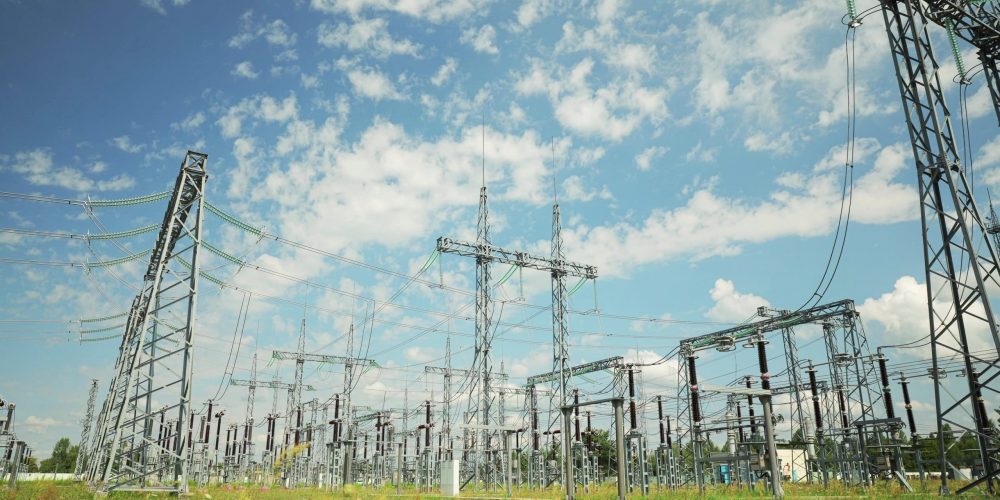The fixtures and appliances in a home receive electricity from a residential electrical distribution system. It gets its energy from the neighborhood distribution grid, which serves a certain area of the town or county.
Through a substation, the latter is linked to a high-voltage transmission network that transmits electricity from the source, a power-producing plant, to the consumers.
The component of the power system known as the distribution system is responsible for distributing electricity for local use. A distribution system is typically the electrical network that runs from the substation supplied by the transmission system to the consumer’s metres.
The following factors are taken into account when designing a distribution system:
- Type of structure: The distribution structure selected will be based on the customer’s specified equipment and usages. In the majority of installations, the building receives electricity at its utilisation voltage, and the power is distributed using a straightforward radial system.
- Utilization at the moment and anticipated demand: This will require some load forecasting. When compared to the expense of purchasing larger equipment to replace smaller ones and other ways to increase capacity when necessary, the cost of carrying surplus capacity as an idle investment is higher.
- projected lifespan of the building
- Structure’s adaptability
- Maximum demand and periods of maximum demand are two examples of load requirements.
- Location of switchgear, distribution equipment, and panels. Location of service entrance and load equipment.
System of Distribution Elements
Distribution Sub-Station – An area’s electrical system that transmits power from the transmission system to the distribution system is known as a distribution sub-station.
Feeders: A feeder is a conduit that links the location where power is to be distributed to the distribution sub-station. Because no tapings are taken from a feeder, the current flows through it at the same rate the entire time. The current carrying capacity of a feeder is the primary factor in its design.
Transformers for distribution – A distribution transformer is a step-down transformer with a primary and secondary linked in a delta and star pattern, respectively. It also goes by the name “service transformer.” In India, the distribution transformer’s output voltage is 440 V for three-phase systems and 230 V for one-phase systems.
Distributor- A distributor is a conductor from whom recordings are extracted and given to customers. Because a distributor has several taping points, the current does not run consistently along its whole length. Because the statutory limit of voltage changes at the consumer’s terminals is 6% of rated voltage, the voltage drop throughout the length of a distributor is its primary design factor.
Service Mains – The distributor is linked to the consumer’s metre by a brief cable known as the service mains.
Initially Distributed
It is that area of an AC distribution system that uses voltages a little bit higher than what the majority of home consumers do. 11 kV, 6.6 kV, and 3.3 kV are the three principal distribution voltages that are frequently utilised worldwide. Large users, such factories and industries, are taken care of through primary distribution. Additionally, it supplies a small substation where secondary distribution is done. A 3-phase, 3-wire arrangement is used for primary distribution.
Additional Distribution
This component supplies residential end users directly. Domestic clients are supplied with 230 volts of single phase power. For large houses, commercial buildings, small industries, etc., a three phase supply at 400 volts may also be offered. In the majority of nations, secondary transmission is done using a 3-phase, 4-wire arrangement.
What Components Make Up a Successful Electrical Distribution System?
The residents of a residence should be provided with comfort, convenience, and safety via a good electrical distribution system. Although we could take these characteristics for granted, it is not always simple to build an electrical system to suit these requirements. This article will go through the fundamental components of residential electrical distribution networks and examine what makes them “excellent.”
Distribution System Classification according to the type of current
- distribution scheme for DC
- distribution of AC
Using the type of construction to classify
- overhead apparatus
- underground network
Classification based on connection scheme
- system of radial
- Ring central system
- system with connections
Different AC Distribution System Types
First Line of Distribution
The primary distribution system is the section of the AC distribution system that runs at voltages just a little bit higher than those used in everyday life. The primary distribution voltage is determined by the quantity of power to be delivered and the needed feed distance to the substation. The principal distribution voltages that are most frequently employed are 6.6 kV, 3.3 kV, and 11 kV. Economical factors led to the 3-phase 3-wire system being used for the main distribution.
System of secondary distribution
The secondary distribution system consists of the voltage bands where consumers use electricity. In India, the secondary distribution uses a 3-phase, 4-wire, 440V (3-phase), system.
System Requirements for Distribution
Some specifications for a successful distribution system include
Proper Voltage- The voltage fluctuations at the terminals of the consumer should be as little as feasible. In India, the statutory limit for voltage changes at consumer terminals is 6% of the rated voltage.
Power availability on demand – The users must have access to electricity in any quantity they may need occasionally.
Reliability – The ability to operate in the modern economy nearly entirely depends on electric power. This necessitates the highest level of dependable service.
Conclusion
A distribution system must be able to affordably and safely accommodate all users, from the smallest to the largest. To do this, it is necessary to foresee the expanding demands of power users well in advance and to make preparations to meet these needs as soon as they arise. Let’s check all the electrical distribution systems products on the IAC electrical.





